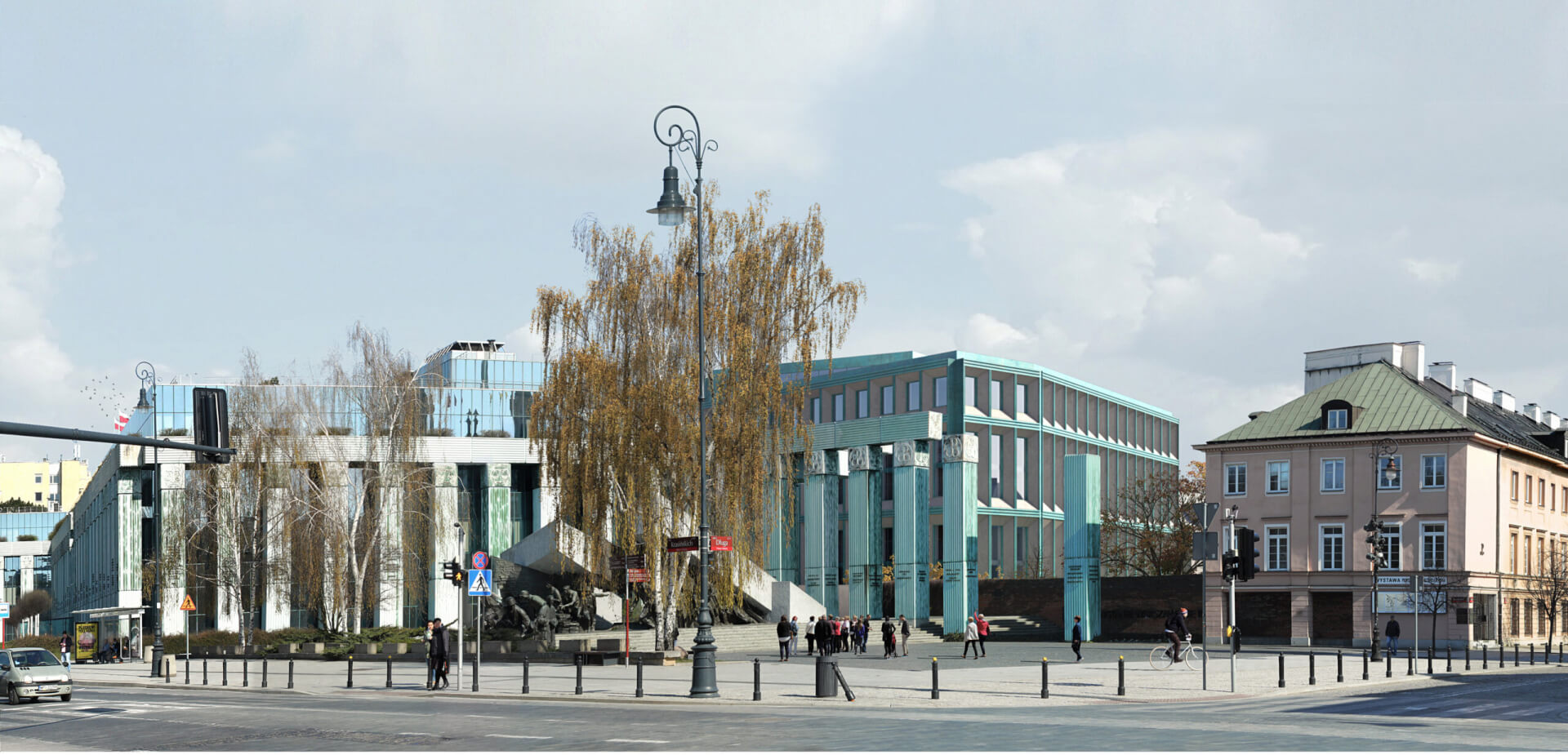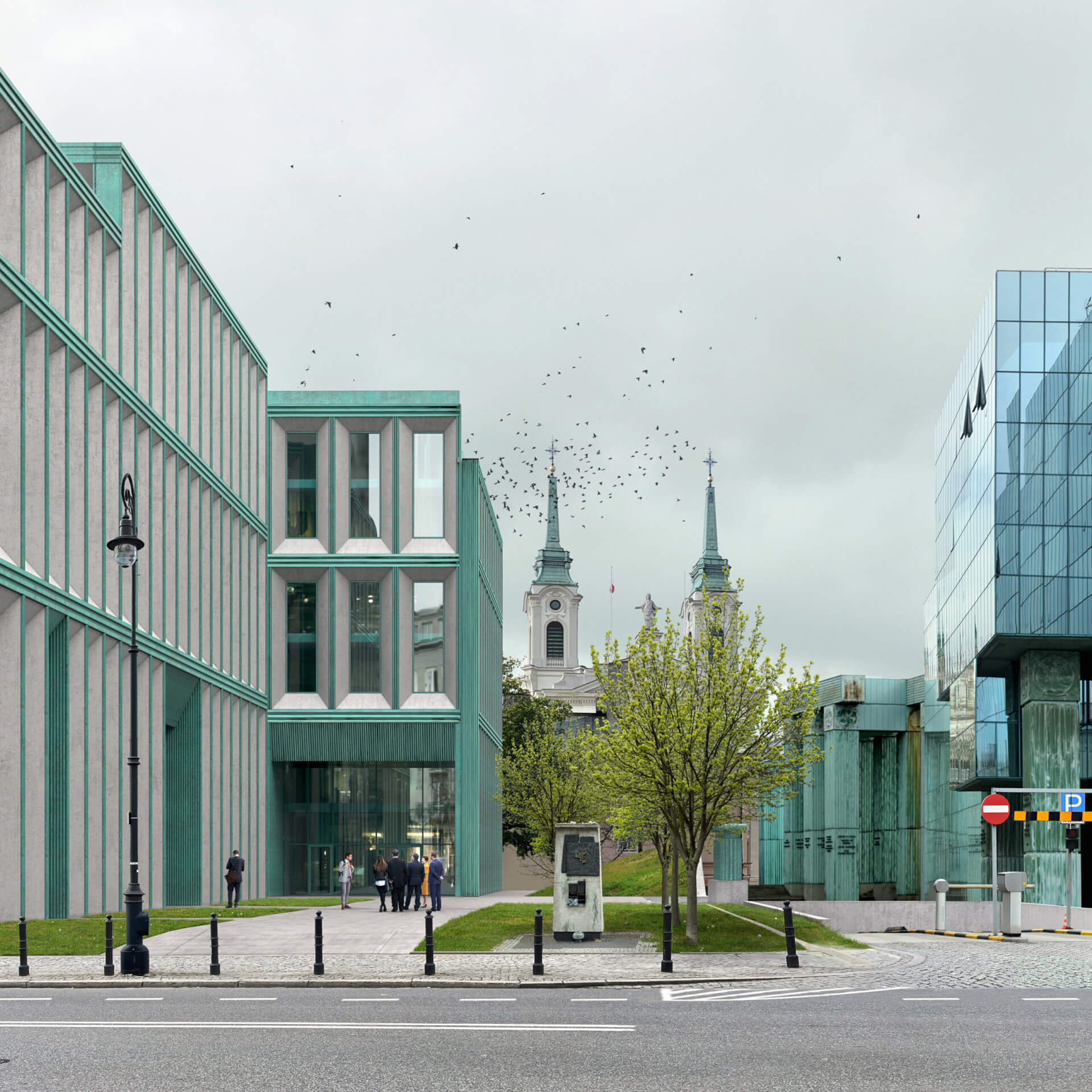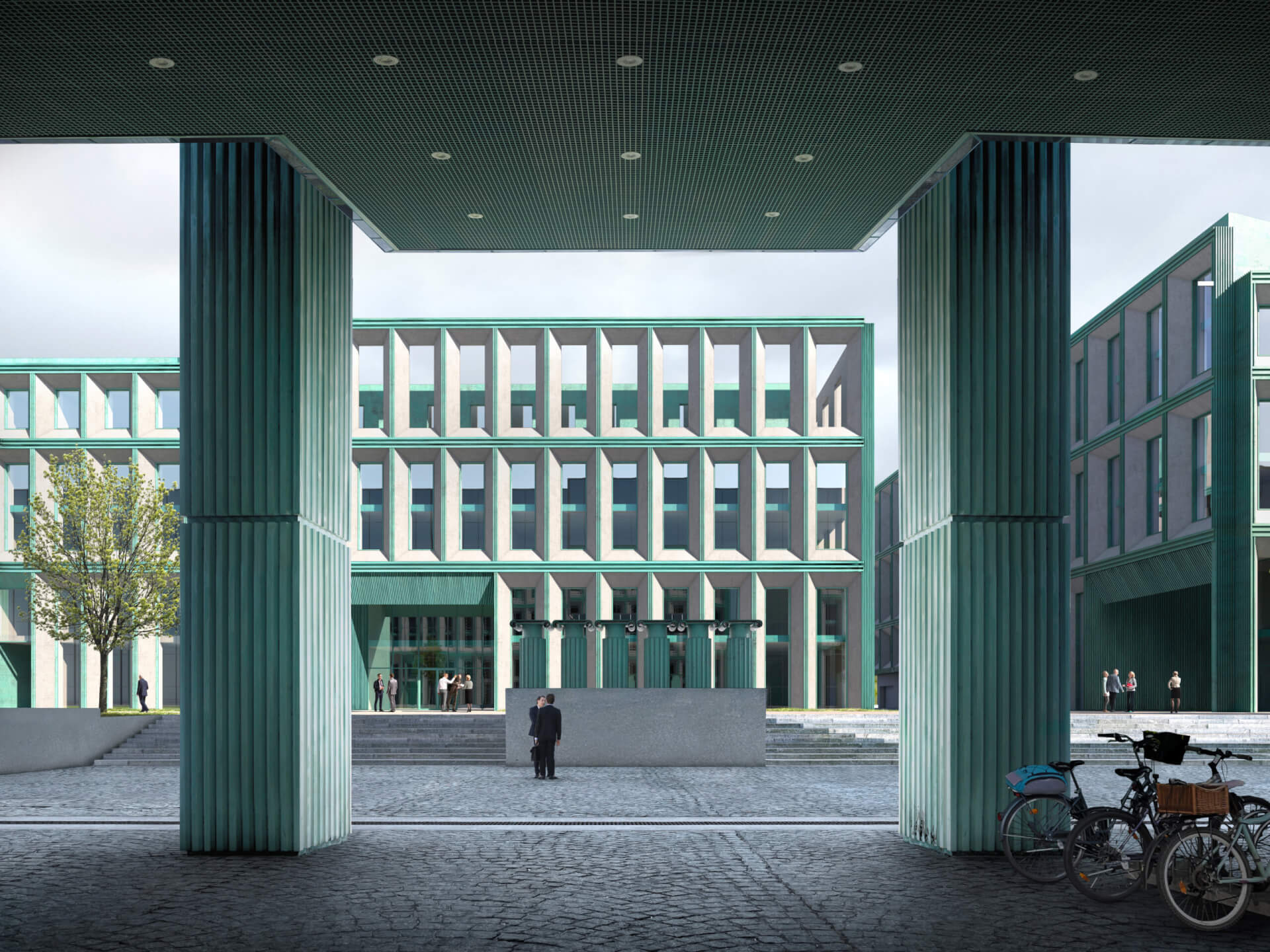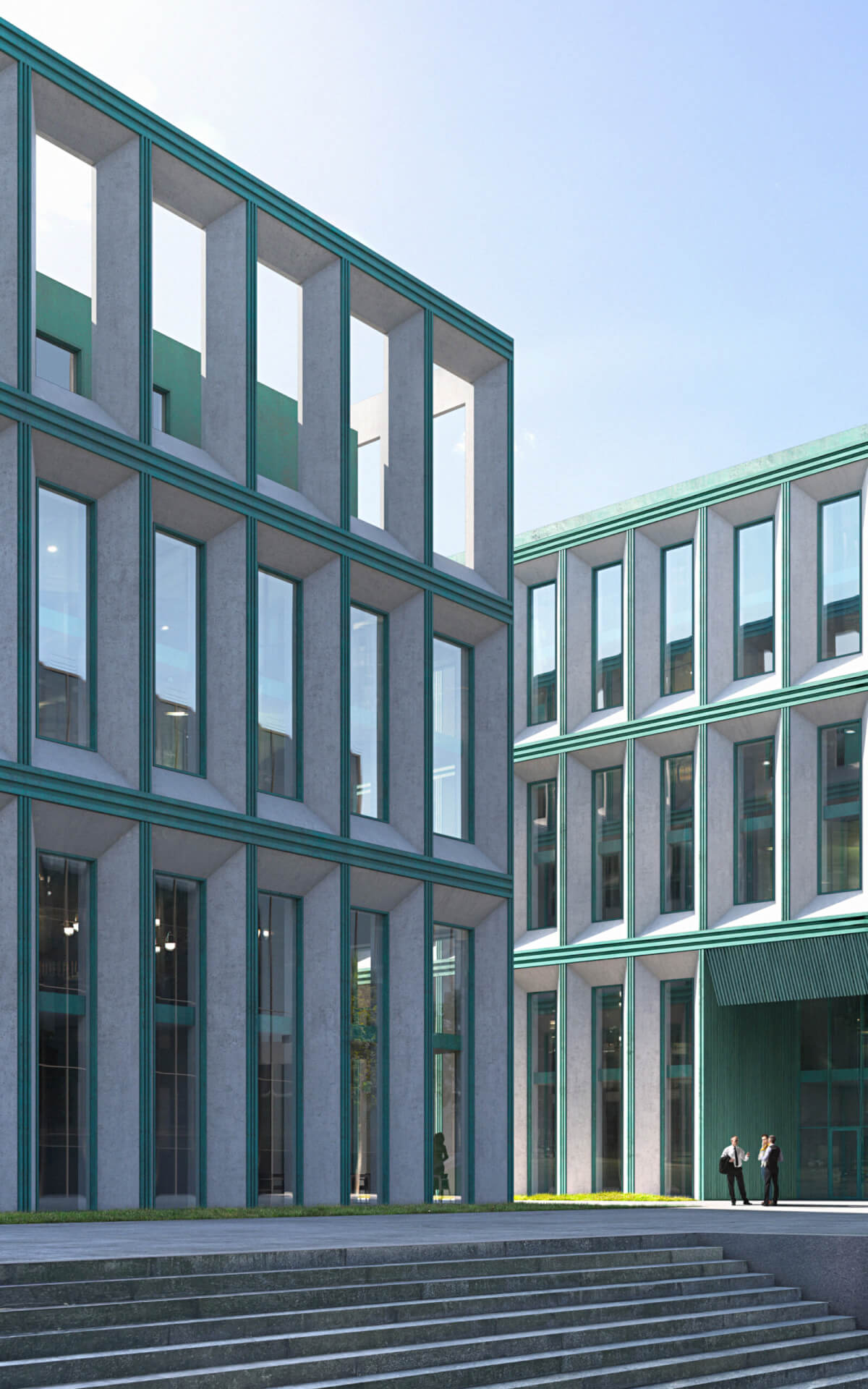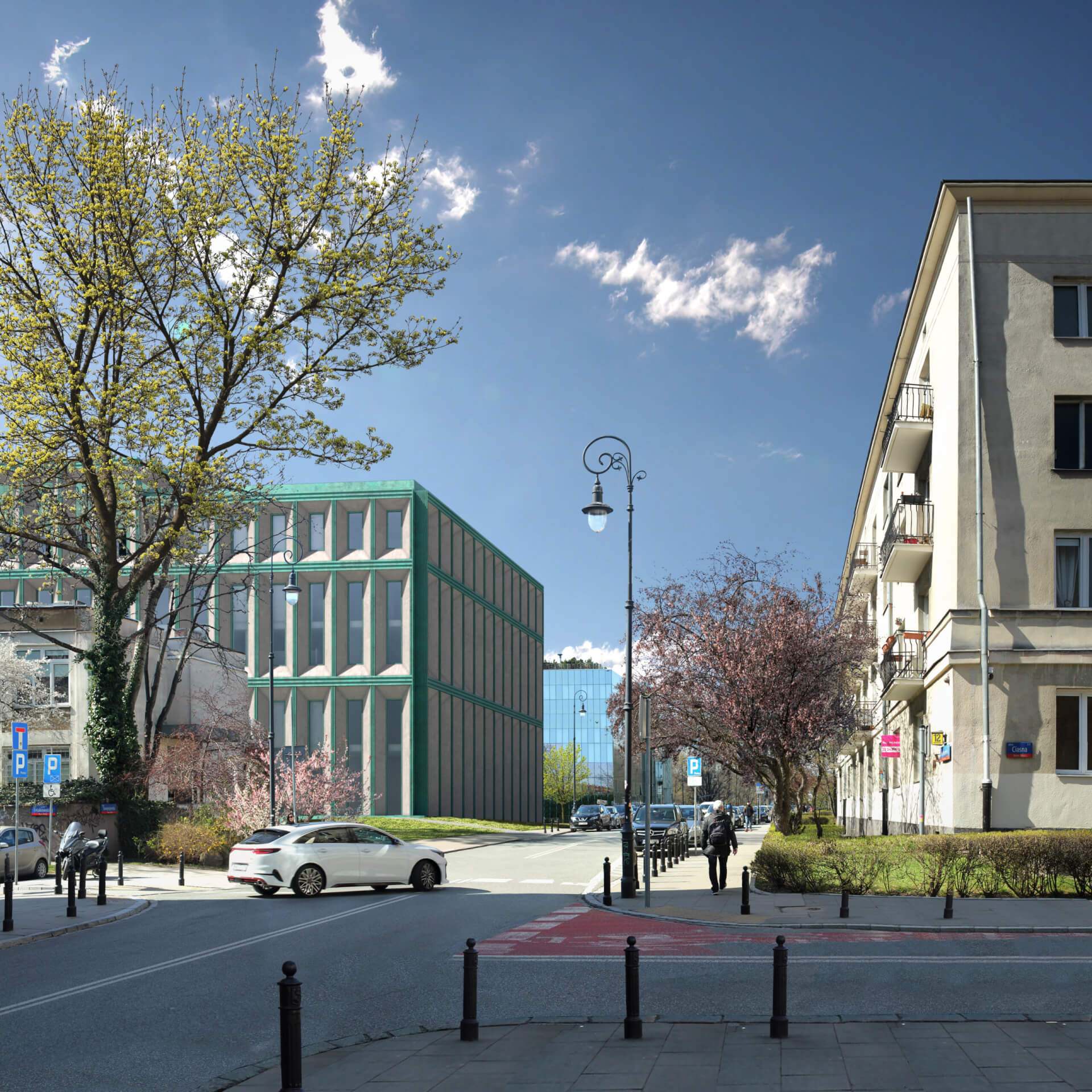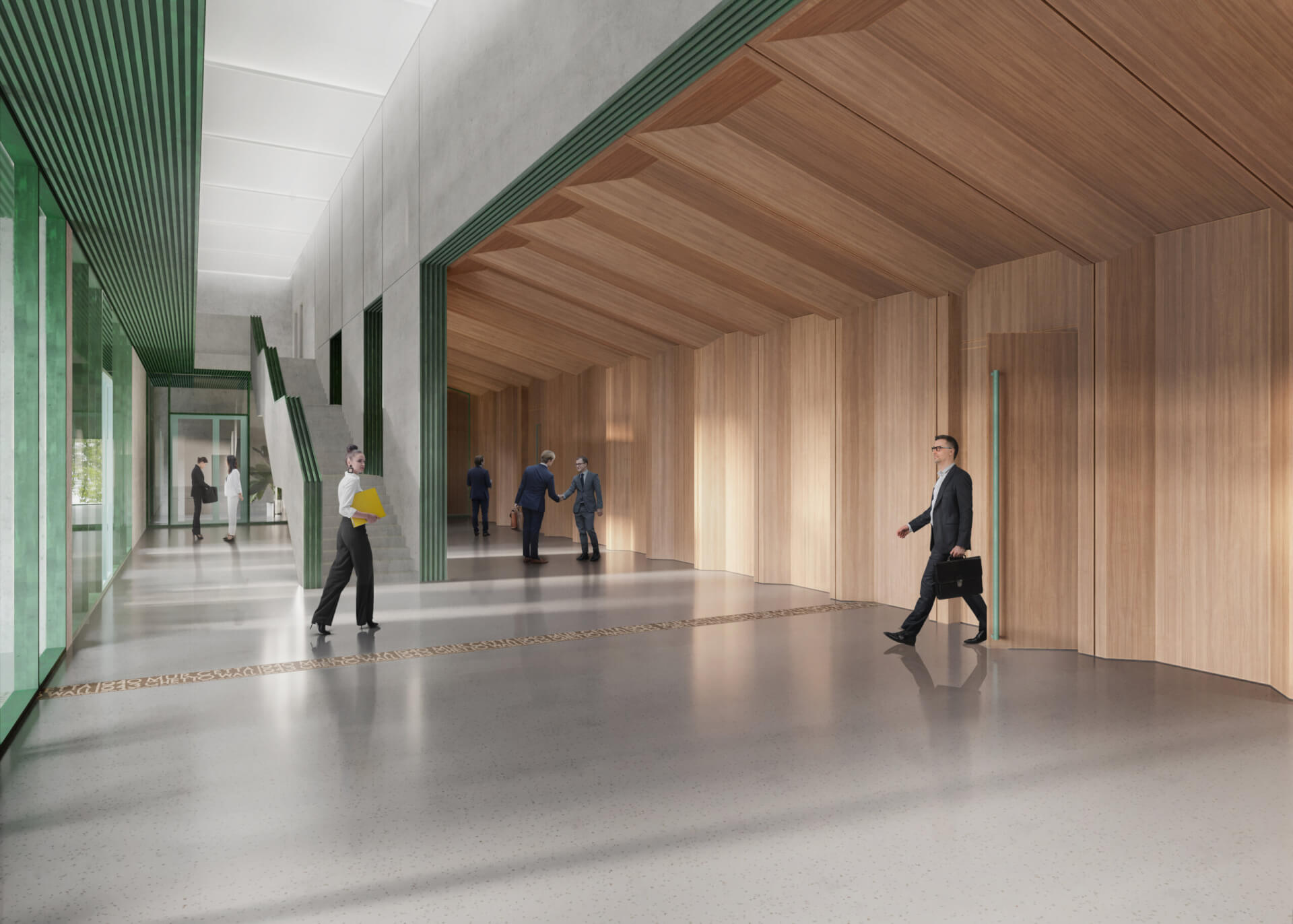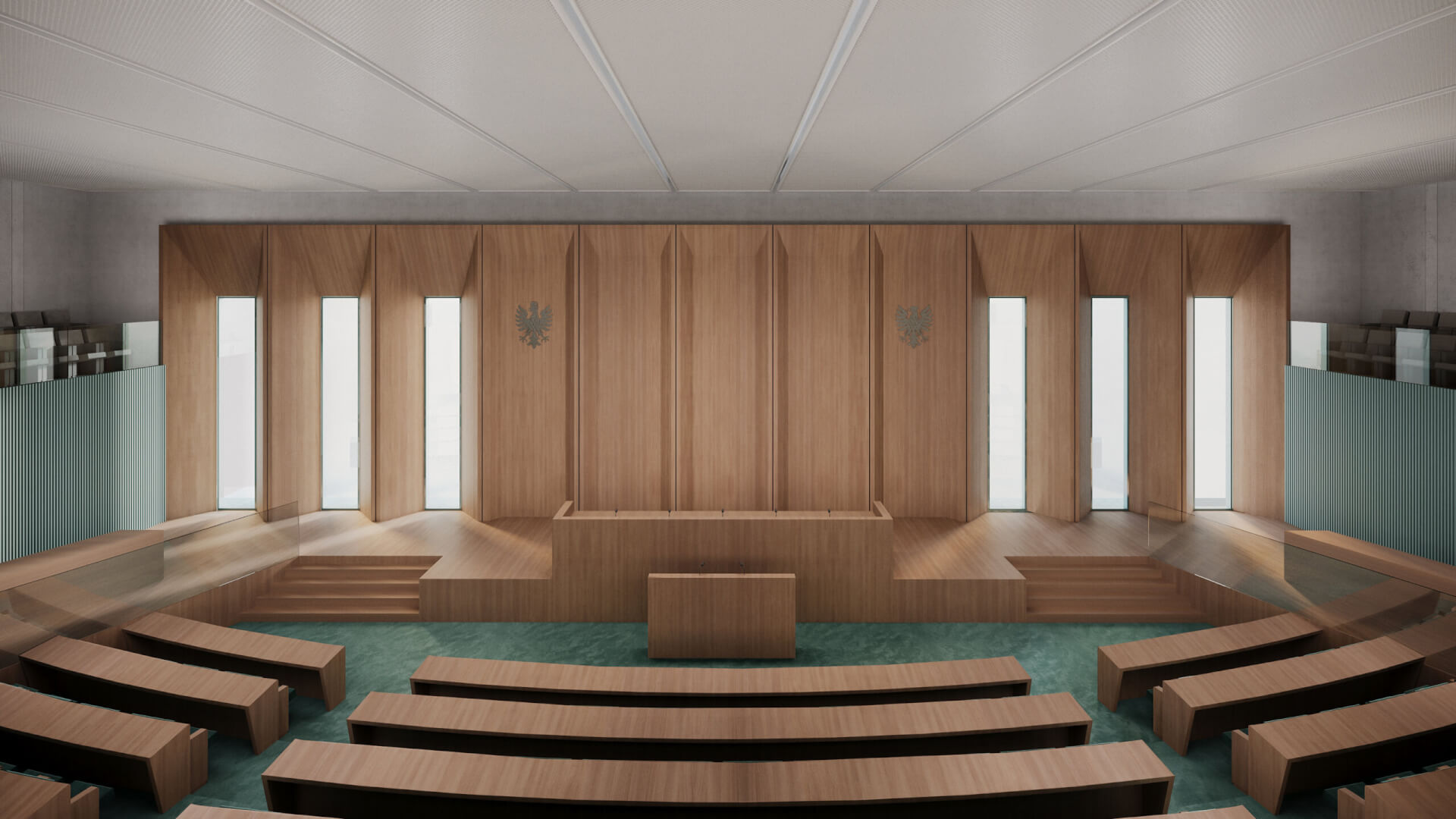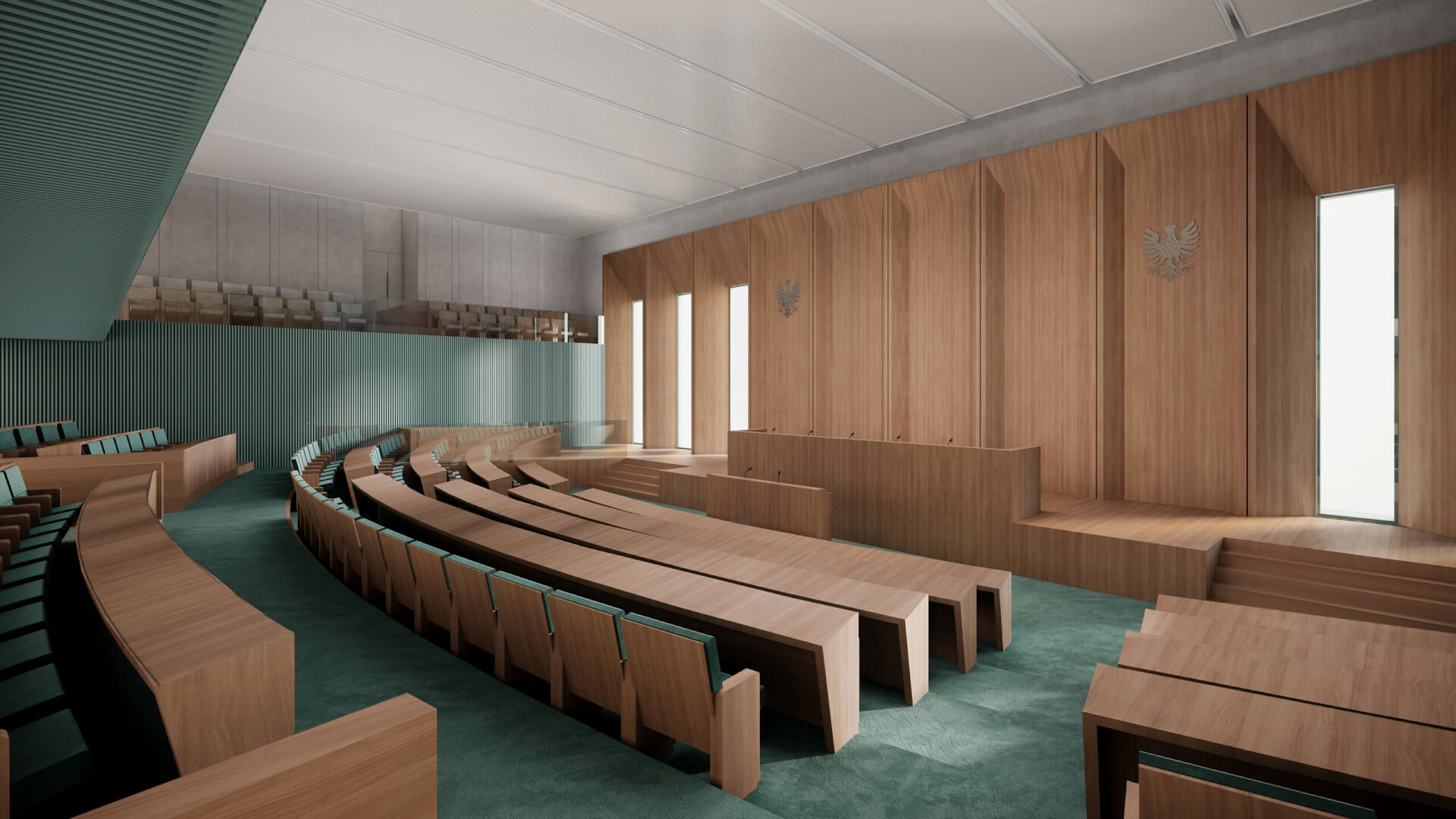appeal court
The Quarter located on Świętojerska Street, behind the Supreme Court, is a unique location not only because of the history of the place, which has a painful genius loci marked by the tragedy of the Warsaw Ghetto, but also because of its enormous urban development potential, somewhat forgotten since the construction of the new Supreme Court building. Despite being located behind an important institution, the space was never intended to be a background, according to the author’s – Professor Budzyński – vision. It was an unfinished idea for an old town street, a capital alleyway through which Warsaw residents pass, shortening their way to the Warsaw Uprising Monument and the square in front of the Polish Army Cathedral. Tourists exploring the urban fabric only accidentally come across this non-trivial interior with a monumental colonnade; most of them, however, arrive here from the monument side, as security guards patrol the passage on Świętojerska Street, which does not encourage reconnaissance.
Revitalizing the area with its chaotic arrangement and the building of the Mazovia Development Agency and the Teacher Training Center provides an opportunity to rebuild and create urban relationships, and to restore this territory to the city’s residents and beyond.
The proposed urban design is based on creating a city square that focuses on the most important connections between the three institutional buildings, and above all, on complementing the urban space with a “void” with a view axis on the Polish Army Cathedral and a looming view of the majestic columns in the background. It is such negative thinking. The most important things are not the building blocks, their form, or detail, but that “mass of air” created in between. Urban breathing is the pillar of this project.
Having taken a full breath of life-giving oxygen, we can discuss the details. The relatively narrow front of the plot, possible to be developed from Świętojerska Street, in a sense, forces us to look for other solutions than locating the main entrances directly from the important transportation route. Hence the idea of a square that aims to attract passers-by into its interior, from where they can easily reach the three important institutions. Spatial openness to the north ensures even exposure of all entrances: to the Supreme Court, the Court of Appeal, and the Mazovia Province headquarters. No portal is privileged. All have the same noble rank. The composition is complemented by the greenish church towers towering over the old tenement house and the latticework of copper, weathered columns. It is a somewhat monumental frame, but how urban, open, and coherent, both spatially and materially.
The color scheme and building material are taken from the Supreme Court building and the Polish Army Cathedral, and although the designed buildings introduce a “novelty” in the facade – a concrete prefabricate – its color belongs to the palette present in the immediate vicinity, making the square’s urban landscape consistent.
Taking into account the variety of spatial forms and the noble neighborhood, the decision was made to create buildings with simple shapes, whose architecture is shaped by the discipline and modularity of the facade’s tectonics. The facades are equipped with a modern, unpretentious detail made of copper sheet metal. The type of corduroy, a geometrically shaped profile, refers to the cladding of the columns of the Supreme Court, but in a smaller and more modest scale and quantity. The rhythm of the facade is crowned each time by open corners, which are a characteristic element of connecting the planes of individual facades.
Stable, newly designed buildings gain dynamism on sunny days when the sun plays with their sculpture. They also present different faces depending on the perspective: in sharp focus, they are full and seemingly inaccessible, disciplined only by the drawing of the copper detail. In a broader context, they present their openness and transparency. The Square of Three Institutions is drawn by light and dynamic frames of austere architectural forms.
The principle of stable and straightforward aesthetics is also transferred to the interiors of the buildings. Materials from the outside, discreetly infiltrate the interior through grooved copper portals to become an aesthetic axis of the project. An important complement, which warms the image of the institution and has a positive effect on the users of the buildings, is the introduction of veneered cladding. Especially in the main entrances zone, the hall of the Sejmik and the assembly hall itself, which, although materially enriched with acoustically absorbent surfaces such as carpeting or dominated by wooden panels in the natural shade of oak and bottle green, is nevertheless colorfully and volumetrically consistent with the solutions used throughout the urban and architectural design.
 all
all 